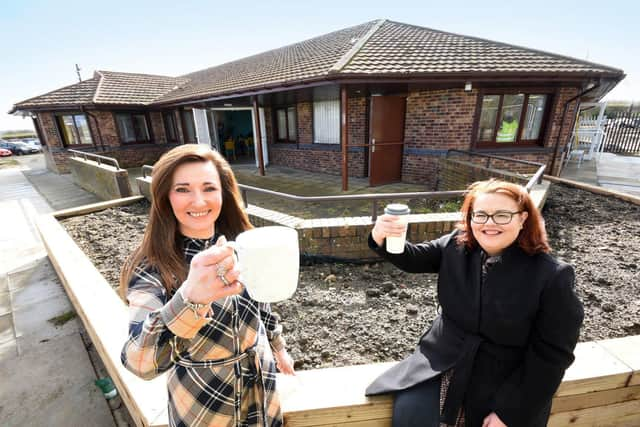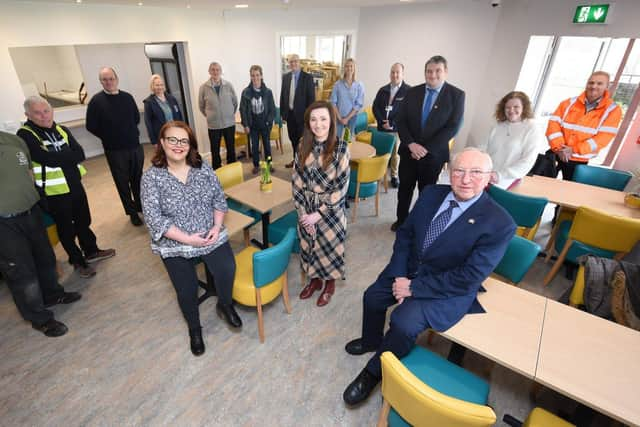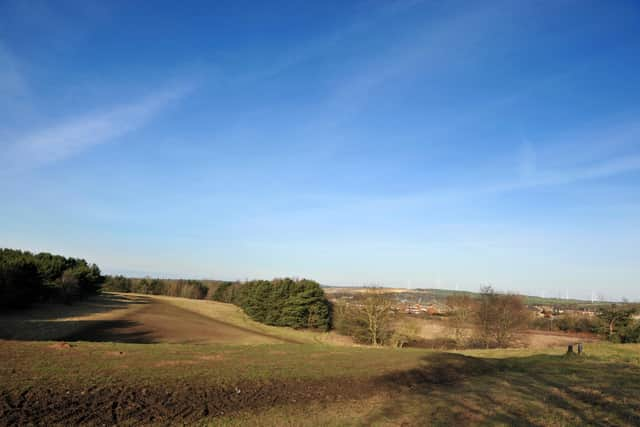Cafe weeks away from opening at Elemore Country Park as major transformation of former colliery site presses ahead
and live on Freeview channel 276
Elemore Country Park is gearing up to open to the public as part of major transformation of the old Elemore Colliery site in Easington Lane.
The 60-acre site was home to the once-thriving Elemore Colliery from 1825 to 1974, as well as a branch line on the famous Hetton Colliery Railway to transport coal to the staithes on the River Wear.
Advertisement
Hide AdAdvertisement
Hide AdIt later became home to Elemore Golf Club, which closed in 2019.


Now, following public consultation, with local residents expressing a desire for it become “usable green space”, it will open as Elemore Country Park, comprising a cafe and garden centre in the former clubhouse.
The eco park is a major development of the area and follows the successful reclamation of other former pits, such as Hetton Lyons Country Park, Herrington Country Park, Rainton Meadows Nature Reserve and Silksworth Lakes, which show how land once scarred by industry can become home to a thriving ecosystem.
The first phase of the park will see the opening of the cafe and garden centre on April 11. Run by Bishopwearmouth Co-operative Community Interest Company, the new cafe and garden centre will employ 16 local people, including six adults with disabilities.
Advertisement
Hide AdAdvertisement
Hide AdWorking with local butchers and bakers, it will also serve local produce, including a pitman's breakfast, in its cafe and grow all of the plants it sells in peat free compost in recyclable pots and trays.With its commitment to accessibility, the community space housing the cafe will also provide day care for adults with disabilities, a Changing Places accessible toilet and a sensory room for adults and children.


Councillor Claire Rowntree, Deputy Leader of Sunderland City Council, who was member lead on the project, said it was so important to preserve sites such as this, instead of them being used by developers.
"The community has always come first in this project,” she said. “It’s so important to preserve land like this for future generations. It was key to get the community involved, so they feel empowered and can take ownership of this site. It’s a co-operative enterprise so all profits will go back into the site.
"It’s a real site of historical significance and is the start of the Stephenson Trail, an 11-mile trail which runs right down to Deptford.”
Advertisement
Hide AdAdvertisement
Hide AdFuture developments at the country park will also include art installations inspired by the heritage railway, poly tunnels used to propagate ingredients for the cafe and an outdoor seating area.


New trees have also been planted as part of the The Queen's Green Canopy project and improvements have been made to the lake to retain and attract more wildlife.
Cllr Rowntree added: “The response so far from the community has been absolutely brilliant. People have joined in from a range of community groups: people with historical interests, people interested from an ecological point of view and those with an interest in co-operative enterprises. There’s been real passion from everyone involved.
"As a project, it really shows how a community can work together and how everyone’s input is important.”
The Stephenson Trail

